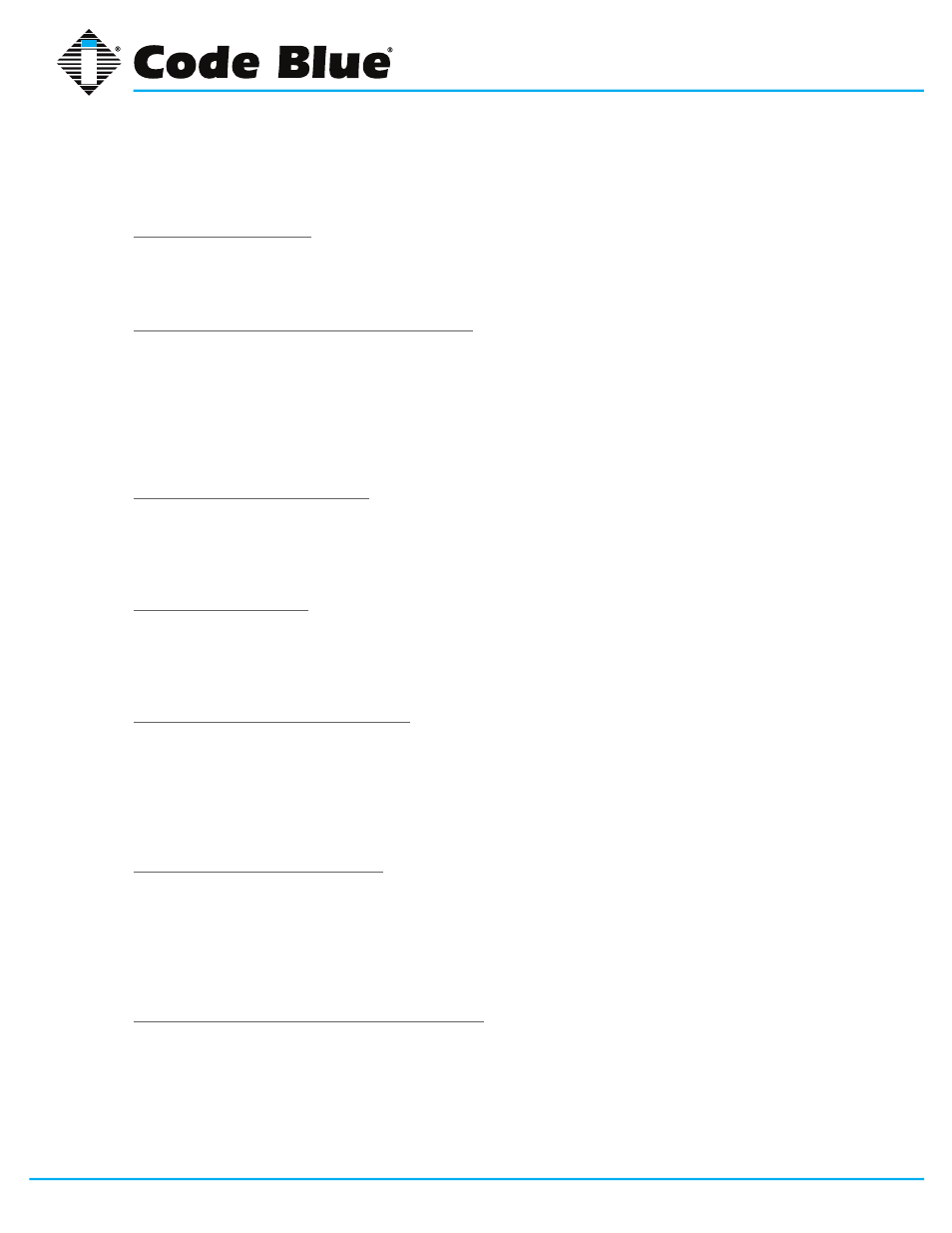Toolvox® x3, Administrator guide – Code Blue TOOLVOX X3 User Manual
Page 108

Code Blue
•
259 Hedcor Street
•
Holland, MI 49423 USA
•
800.205.7186
•
www.codeblue.com
GU-154-F
page 108 of 132
ToolVox® X3
Administrator Guide
high load environments, altering this to include bounce notifications could lead to a large number of
notices.
Other General Options
The lower section of this page is devoted to global options that are less likely to need alteration. In
many installations, these options will remain at their defaults.
Address that receives bcc of each message
With this option, an optional email address may be specified to receive a copy of every message
that enters the Postfix system, excluding locally generated bounce messages. This can represent
a breach of privacy in many circumstances and may be illegal in some countries. It is advisable to
be cautious about utilizing this option. It can be useful in some environments where email archives
are valuable for legal or technical reasons. This option correlates to the always_bcc directive and
defaults to none.
Timeout on handling requests
This option determines how long a Postfix daemon will wait on a request to complete before
it assumes the daemon has locked up, at which time the daemon will be killed. This option
corresponds to the daemon_timeout and defaults to 18,000 seconds.
Default database type
This option determines the type of database to use in the postalias and postmap commands, and
corresponds to the default_database_type directive. The default depends on the OS and installed
system libraries at the time of building Postfix. Ordinarily this will be hash or dbm on UNIX systems.
Default message delivery transport
The term delivery transport refers to the protocol, or language, used to deliver the message from
one mail server to another. The transport on modern systems is nearly always smtp, and this is
the default in Postfix, but there are still a few legacy uucp systems in use. This option is merely the
default choice when no transport is explicitly selected for the destination in the optional transport
table. This option corresponds to the default_transport directive.
Sender address for bounce mail
In the event a message double-bounces, or first bounces from the recipient and then bounces from
the sender after the first bounce notice is sent, it will be sent to this address. All messages will be
silently discarded. In this way, bounce-loops can be avoided. This option correlates to the double_
bounce_sender and defaults to double-bounce. The name may be any arbitrary name, but it must
be unique.
Number of subdir levels below the queue dir
This option configures the number of subdirectory levels below the configured queue directories that
will be used by Postfix for mail storage. Because of the design of the traditional UNIX filesystem,
which includes UFS used by all modern BSD systems and the Linux ext2 and ext3 filesystems,
performance becomes measurably slower when an extremely large number of files are stored in
a single directory. Thus, programs that generate a large number of files often provide the ability to